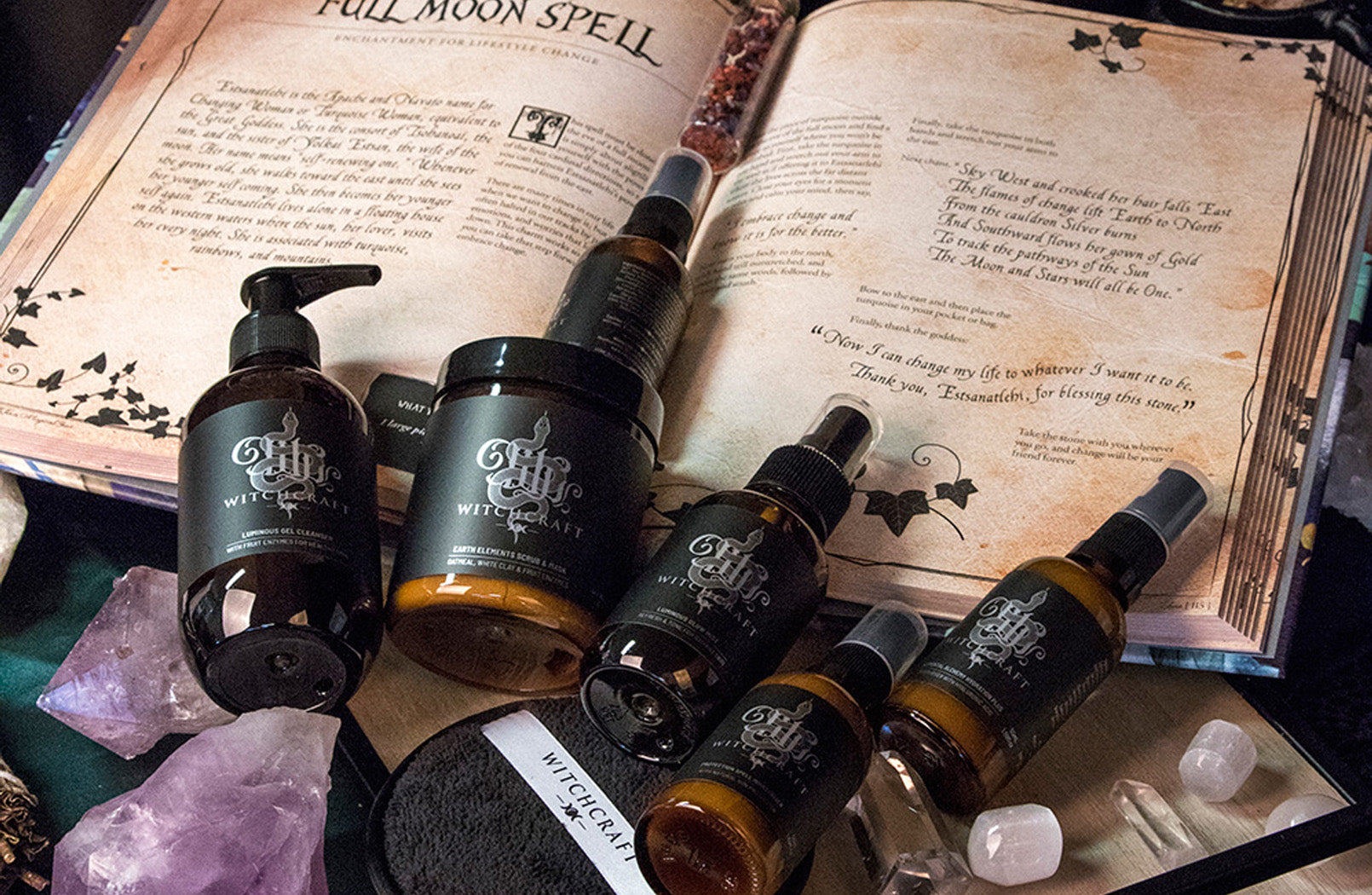We have a new Book of Shadows blog with an updated Altar Essentials guide and lots more witchy tips here.
Centralising the focus of your power and intentions in magick rituals is a simple yet useful way of enhancing the desired outcomes of your spells. While learning and refining your skills, having a dedicated space, with all the essentials nearby, also saves a lot of time, as you won’t need to hunt around for the essential elements each time you practice.
If you are new to practicing witchcraft, an altar setup can seem convoluted and confusing, but it doesn’t have to be. Starting an altar setup requires a few basics that are central to most forms of practice, and from there you can add additional items for your specific needs or focus.
Prepare your altar space
Begin by deciding on the space you will use. At a minimum you just need an empty surface, and preferably it should be somewhere out of the way of household traffic to enable you to focus without distractions and interruptions. The space should also have adequate ventilation for when you burn or smoke ingredients so you don’t become overwhelmed with fumes. It's also handy to have a bookshelf for your important texts and grimoires/book of shadows, and a cabinet or shelves for your ingredients, crystals, and candles.
Altar table
A small table is perfect for an altar setup. Place a plush cushion next for comfort when sitting or kneeling to meditate or perform rituals. Tables that come with an inscribed pattern, such as a pentagram or triple moon can also enhance your rituals without the need for a particular cloth or additional items (more on that below).
Altar cloth
Altar cloths have multiple purposes. The first is the obvious – it protects the surface underneath, and makes the area easier to keep clean. But additionally to that, an altar cloth can be printed or embroidered with symbology to enhance your rituals, and/or to indicate where to place certain items.
Triple moon or pentacle?
A pentacle or pentagram is one of the most powerful wiccan symbols. A pentagram represents the creation of the universe and the relationship between the macrocosm and microcosm, or ‘as above, so below’. This powerful symbology therefore is a benefit to any altar setup. Whether inscribed into the surface below the altar, or on the altar cloth, or hanging nearby, we recommend you have at least one in your altar setup. The triple moon symbol, which represents the three stages of womanhood (maiden – mother – crone) is also powerful symbology with a strong history of use in magick. When using either of these symbols on the surface of the altar, power is enhanced by placing ritual items strategically on the points of each symbol.
Representing the Elements
Collect four items that represent the four elements of earth, air, fire and water. Candles are the easiest way to represent fire, and you can start simply with a black pillar candle and then grow your collection with symbolically coloured candles for specific needs. For water, an elemental resin or chalice filled with distilled water are good choices. For earth, crystals are the perfect starting point, particularly as most have multiple meanings and so building a crystal collection meets both the elemental symbology, and addresses specific focus needs. A dish of sand can also be used for earth, although this can be a bit messier if you’re clumsy like me. For air, a feather, athame, a wand, windchimes or bells are all good options.
You can also use tarot cards to represent the elements if you have a deck handy.
Book of shadows
It’s important to have a book of shadows if you are going to be working magick. It’s a notebook for writing down spells (and the ingredients/elements you are using), rituals, results and any other important notes or things you’ve learned along the way. Some witches like to make theirs decorative and full of illustrations and drawings, but if you are not that creatively inclined, it’s fine to just write in it as a journal, and/or stick in clippings from other texts. How to organise it is up to you and your personal style – some like to divide with stick-in tabs to create sections, and others prefer a more linear approach, in which you can flick through and relive your magickal progression. If your practice has rules or laws, it’s good to include these right at the front or back for easy reference. It’s also handy to create a correspondence table somewhere in the book, with lists of common substitutions for spell ingredients or ideas on how to represent the elements with what you have collected for your altar.
Refer to our blog post on substituting spell ingredients for ideas on how to substitute.
Cauldrons, chalices and braziers
Many ritual workings will require you to burn or smoke spell ingredients, burn resin incense for ambience, or have liquids or other substances (such as sand) nearby. Ideally you should have several small cauldrons and ritual bowls to avoid cross-contamination with regular spellwork. A heat-proof cast iron cauldron and copper bowl are a must for a start, and beyond that you should add to your collection as your needs grow.






















































































































































































